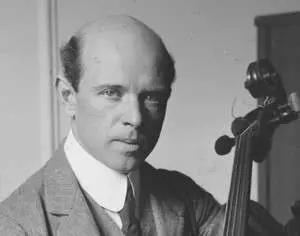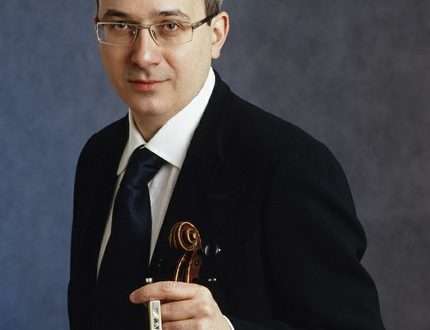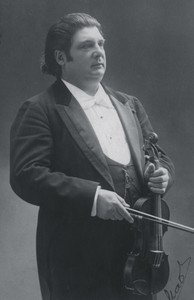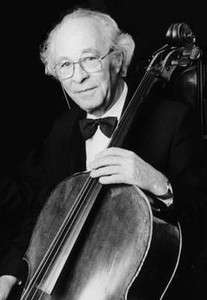
Pablo Casals |
Pablo Casals

Spanish cellist, conductor, composer, musical and public figure. Son of an organist. He studied cello with X. Garcia at the Barcelona Conservatory and with T. Breton and X. Monasterio at the Madrid Conservatory (since 1891). He began to give concerts in the 1890s in Barcelona, where he also taught at the conservatory. In 1899 he made his debut in Paris. From 1901 he toured in many countries of the world. In 1905-13, he performed annually in Russia as a soloist and in an ensemble with S. V. Rakhmaninov, A. I. Ziloti, and A. B. Goldenweiser.
Many composers dedicated their works to Casals, including A. K. Glazunov – a concert-ballad, MP Gnesin – a sonata-ballad, A. A. Krein – a poem. Until a very old age, Casals did not stop performing as a soloist, conductor, and ensemble player (since 1905 he was a member of the well-known trio: A. Cortot – J. Thibaut – Casals).
Casals is one of the most outstanding musicians of the 20th century. In the history of cello art, his name marks a new era associated with the bright development of artistic performance, the wide disclosure of the rich expressive possibilities of the cello, and the ennoblement of its repertoire. His playing was distinguished by depth and richness, a finely developed sense of style, artistic phrasing, and a combination of emotionality and thoughtfulness. Beautiful natural tone and perfect technique served for a bright and truthful embodiment of the musical content.
Casals became especially famous for his deep and perfect interpretation of the works of J. S. Bach, as well as for the performance of the music of L. Beethoven, R. Schumann, J. Brahms and A. Dvorak. The art of Casals and his progressive artistic views had a huge impact on the musical and performing culture of the 20th century.
For many years he was engaged in teaching activities: he taught at the Barcelona Conservatory (among his students – G. Casado), at the Ecole Normal in Paris, after 1945 – at mastery courses in Switzerland, France, the USA, etc.
Casals is an active musical and public figure: he organized the first symphony orchestra in Barcelona (1920), with which he performed as a conductor (until 1936), the Working Musical Society (led it in 1924-36), a music school, a music magazine and Sunday concerts for workers, which contributed to the musical education of Catalonia.
These educational initiatives ceased to exist after the fascist uprising in Spain (1936). A patriot and anti-fascist, Casals actively helped the Republicans during the war. After the fall of the Spanish Republic (1939) he emigrated and settled in the south of France, in Prades. From 1956 he lived in San Juan (Puerto Rico), where he founded a symphony orchestra (1959) and a conservatory (1960).
Casals took the initiative to organize festivals in Prada (1950-66; among the speakers were D. F. Oistrakh and other Soviet musicians) and San Juan (since 1957). Since 1957 competitions named after Casals (the first in Paris) and “in honor of Casals” (in Budapest) have been held.
Casals showed himself as an active fighter for peace. He is the author of the oratorio El pesebre (1943, 1st performance 1960), the main idea of which is embodied in the final words: “Peace to all people of good will!” At the request of the UN Secretary-General U Thant, Casals wrote the “Hymn to Peace” (3-part work), which was performed under his direction at a gala concert at the UN in 1971. He was awarded the UN Peace Medal. He also wrote a number of symphonic, choral and chamber-instrumental works, pieces for cello solo and cello ensemble. He continued to play, conduct and teach until the end of his life.
References: Borisyak A., Essays on the school of Pablo Casals, M., 1929; Ginzburg L., Pablo Casals, M., 1958, 1966; Corredor J. M., Conversations with Pablo Casals. Enter. article and comments by L. S. Ginzburg, trans. from French, L., 1960.
L. S. Ginzburg





